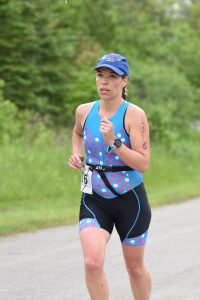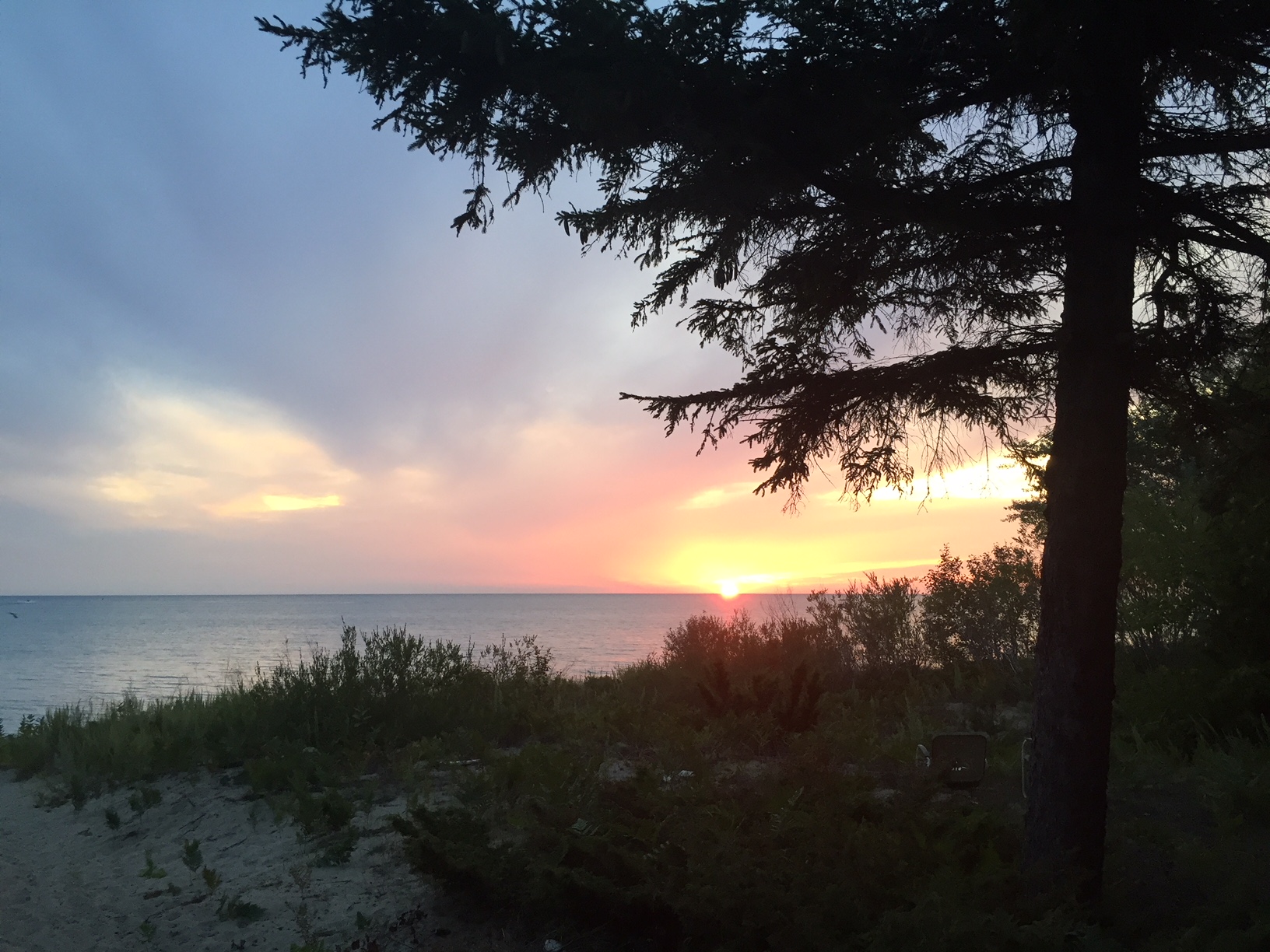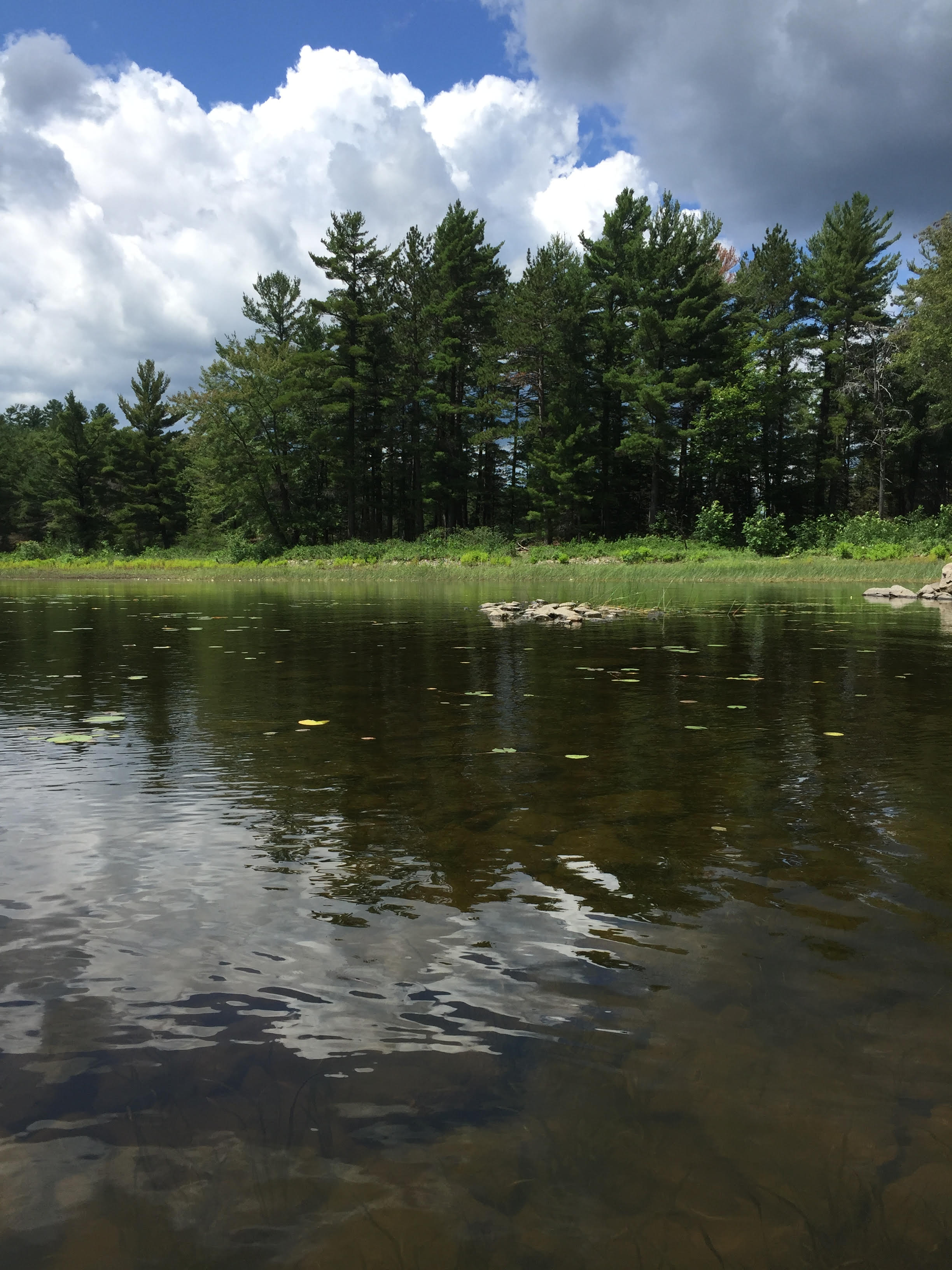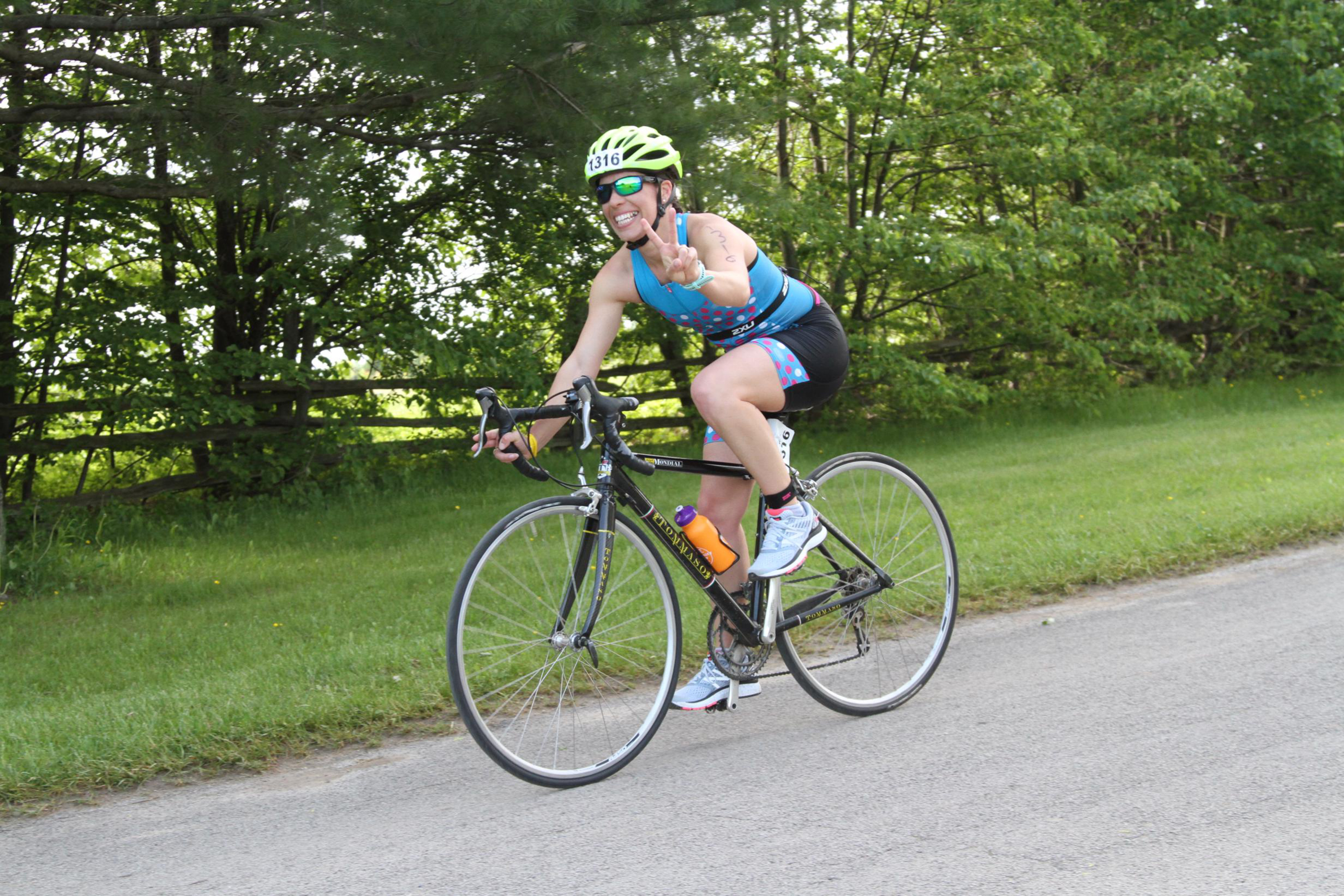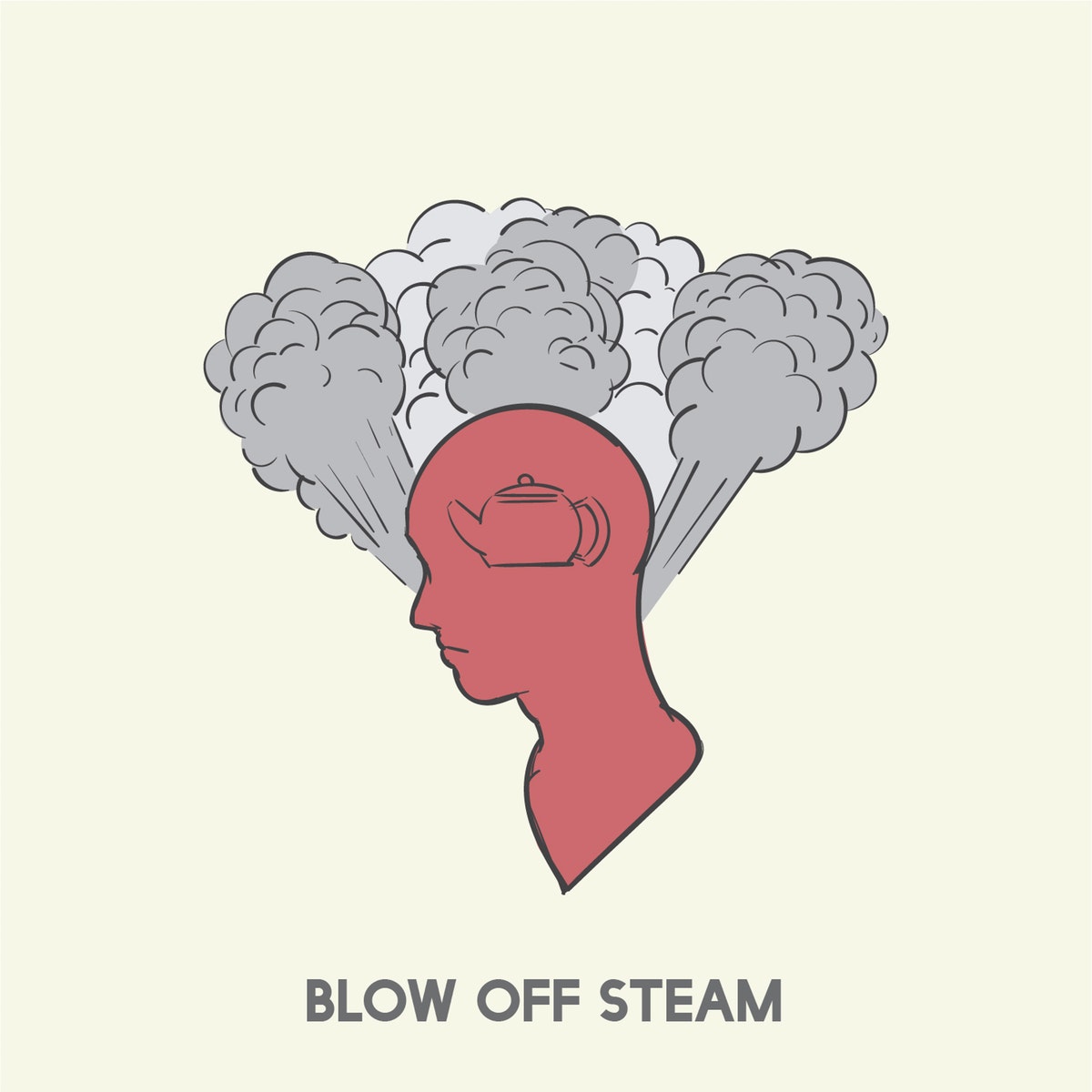Hand shielding my face from the sun, I stood looking out over the water at the point where gentle waves lapped the shore. Seven hundred and fifty metres looks like a long way out, let me tell you, especially when you’ve been practicing twenty-five meter swim lengths in the pool. I looked for a sympathetic gaze among the small crowd gathered at the beach. “The swim is daunting, isn’t it?” I threw the comment at a couple nearby. “Is it?” the man challenged me. No sympathy here. It’s race day, and everyone has their game face on.
I would be lying if I lead you to believe Guelph Lake was my first of first triathlons. Last year, I participated in Milton’s Try-A-Tri early on in the season, a respectable 250m swim, 10km bike ride, and 2.5km run. I rode a mountain bike and got in the water with little to no swim training, comforting and consoling myself with the notion beforehand that I was “an athlete” and therefore could complete the Try-A-Tri “no problem”. Also, haven’t we all been bike riding since childhood? And swimming! I love swimming! In pools and laying out to dry on the deck. These thoughts were delusional.
Swimming and cycling for pleasure are not at all the same thing as the activity performed in the pursuit of sport. Akin to the way walking and running are not the same thing. And though I was training for a marathon, and considered myself in decent shape, that short baby triathlon distance killed me. The swim was a complete disaster. I tried every stroke imaginable and came out of the water gasping for breath. The bike ride was equally traumatizing, as every single person passed me by, throwing their dust in my wake. And the run – my area of expertise – felt like a flop. My legs were bowls of jello filled with lead, and by the time the “bricks” feeling passed, the race was over. I was determined that my next triathlon experience should be different. After a sprained wrist in a bike accident debacle, I took the rest of last season off, choosing instead to focus the rest of the summer on marathon training, which took place in the fall.
With my marathon complete, I hummed and hawed. To run another marathon, or get back to triathlon training? I didn’t feel like I could pull off both. Upon reflection, I felt like triathlons and I had some unfinished business. I couldn’t let one fall off my bike get the better of me, and so I leaned back in the direction of multi-disciplinary training. My initial plan was to kick off the season with a Try-A-Tri, and work up to a Sprint Triathlon, but the race dates and our family’s plans conspired to push me right off the bat: I would compete in Guelph Lake I Sprint Triathlon.
With close to five hundred competitors in the Sprint Triathlon, as well as a relay and duathlon that run concurrently, it’s a busy and popular race. In planning ahead, I decided I would arrive an hour and a half before my 9:00 am race time. This would give me ample time to park, use the bathroom, set up my space in the transition area and register, orient myself as to the course layout, check my bike and take it out for a jaunt, go for a short jog, get my wetsuit on and last, but not least, test out the water and swim a few strokes. An hour and a half ended up being the exact perfect amount of time for me to accomplish these steps.
But let’s back up a step! How did I get to race day? As a person who’s been an athlete and competitor in some form of sport since I was a kid in the single digits, here is what I find works well for me.
Weight training. One day a week, I attend Body Pump at Goodlife Fitness. It’s a one hour class and you cover every muscle group. When I let this class go because I found the training to be too much when marathon training, I regretted it. Strength training appears to be quite important to my fitness regime.
Yoga. I try to make it to Body Flow at Goodlife every week. I find the combination of stretching and strengthening makes a huge difference in how I feel, and helps soothe achy muscles.
Running. While running is taking a back seat in my triathlon training, I’m still running three days a week on average. One of those runs is a long run, which for the purposes of my training now, is about 10km give or take a few. I was also fitting in two other 5 – 6km runs at a regular or tempo pace (a bit faster than normal, but not race pace), but I will be exchanging one of these for an interval workout in the space between now and my next triathlon. I’d like to get out running some sprints on a track while it’s nicer out. Speed workouts and interval training are what make you faster. You run faster but actually running faster. Two years ago, I placed third in a 5km road race by applying this principal of running faster to be faster. All winter long, I ran intervals on our treadmill and progressively increased my speed and sustained interval periods to longer and faster, building to a speedier pace than I’d ever run before. Translating that speed to outside was difficult, but manageable with practice, time and sustained effort.
In addition to running, I’ve had to put a major focus on swimming in the past year and with the nicer weather, getting out to go cycling as well. As I’ve really only been biking with the warmer weather, though, in retrospect, I probably should have been doing spin classes all winter, and it isn’t surprising that the cycle portion ended up being my weakest leg of the triathlon. On the bike is where I need to focus before my next triathlon, but I’m getting ahead of myself.
Swimming. I have been swimming all year, early Saturday mornings. In doing so, I’ve worked up to fifty laps. For my race, I needed to be able to swim the distance of thirty laps, but open water is a different beast.
Cycling. I try to get in a long bike ride with a friend on the weekend, and another shorter bike ride or swim through the week. As the cycle portion for this race was 19km, I was aiming for 25km rides as a shorter training distance and closer to 35km for longer. I am going to continue to extend these distances.
And last, but definitely not least, probably the most important aspect of my training is my rest day. There is no way I could sustain the amount of exercise I do without taking at least one day off. When marathon training, I scheduled two.
Sprint Triathlon distances are not all created equally. While Guelph Lake I is 750m swim, 19km bike, 5km run, the next race I’m planning to attend in Orillia has the Sprint distances at 750m swim, 33km bike and 7km run. That’s a 40 percent increase in the bike and run! I’m going to have to step up my bike training.
So here’s how the race played out.
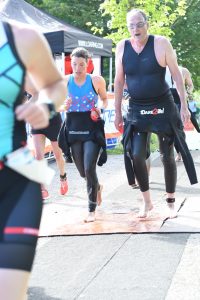
My swim training paid off. I felt comfortable in the water, no matter how much of it I swallowed. Picture a mass of writhing salmon headed upstream, and that was what the experience felt like. Bodies flailing around me. On the plus side, you forget you’re in the middle of the lake. The swim is set up as a trapezoid. Out, across and then back. The swim across, parallel to the shore line, felt relatively short compared to the out and back. At some point on the way back, my arms were numb with fatigue. My hands and feet were numb from the cold. The water was a cool sixty-five degrees Fahrenheit. Landing ashore was a godsend. Then I was off, running up a hill to get back to the transition area, trying to strip off half my wet suit in the process, and breathing like a fish out of water.
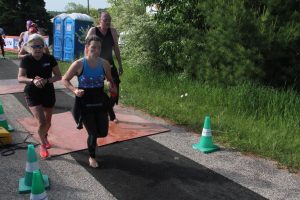
Next the bike. DO NOT FORGET: helmet on and clipped before you even think about touching that bike! I later told Dan that I found the cycling section to be the easiest, though it is comparatively the longest section of the race. While the swim took me 19 minutes, the bike lasted for 44 minutes. Dan, ever my biggest supporter and toughest coach, gave it to me straight, “That’s because you weren’t pushing hard enough.” He’s probably right. Though I was working hard, there’s no doubt I have a thing or two to learn about how to cycle more efficiently. One step I can implement is to wear my bike shoes, which are clip in, instead of my running shoes. While wearing running shoes saves time in the transition zone because you don’t need to change shoes, bike shoes have their advantage. Instead of working to pull the pedal upwards, the bike shoes will do that for me, therefore using less of my energy and making my stride on the bike smoother (and silkier too, I imagine, especially if this was a hair commercial.)

Though I wasn’t super-fast, I felt strong on the bike, and it helped that I saw my cheering squad, my adorable little family, standing around the first bend. If that doesn’t give you a boost, I don’t know what will. Well, okay – besides training.
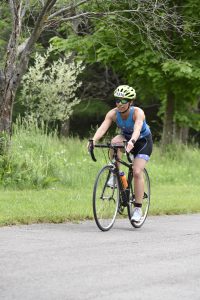
With the bike portion over with, only the run remained. As I used my Garmin watch in triathlon mode, it only showed my overall race time (and now was not the time to be fiddling with it), so I had no idea what my pace was, I just pushed myself to run as fast as I could at a jogging pace. The run portion is where endurance training pays off. But man, was it tough. Five kilometers is normally a comfortable distance for me. If you told me to get up and run 5km right now, I could (though I might ask you to leave), but as soon as you put some speed behind it, and a bike ride, and a swim, the Triathlon run feels almost like a new sport.

For starters, your legs will be unnaturally heavy from the bike, and I also had the unpleasant sensation of a stomach cramp. I felt irritable, like I needed a good stretch or – you know that feeling when you get restless legs? I had some of that going on, too. Eventually, my lungs and legs were burning. Truth be told, I was annoyed by the amount of effort this run was costing me. This is the curse of playing favourites: mistaking your preferred leg of the race for being the easiest. Not the same thing! It may be the lesser of three evils, but it’s evil all the same! Nevertheless, and despite my gripping, I was happy afterwards with my time of twenty-six minutes. And of course, I pulled out my signature move, and ran a hard sprint at the end and ended up passing at least five people. The crowd went wild, “STRONG FINISH!!!!” they screamed in excitement from somewhere beside me. When I sprint at the end, I know I gave it everything I have.

Completing the Sprint Triathlon was anything but easy. And though writing about it a few days later is making me feel exhausted all over again (partially because I still am), I had so much fun and am excited to complete another one!

In case you’re wondering, in terms of the burn, the Sprint came nowhere near the exertion it takes to complete a marathon, which makes total sense. Compare the hour and a half the Triathlon took me to the four and a half hours spent running my first marathon and it’s a no-brainer. I would rate racing a half marathon as being more demanding on my body than the triathlon felt as well, as a point of comparison, which also takes closer to two hours.
What it comes down to is this: how difficult you find your first triathlon will completely depend on your level of training and preparation going into it.
Best of luck, and to all the triathletes out there: have a great season!
